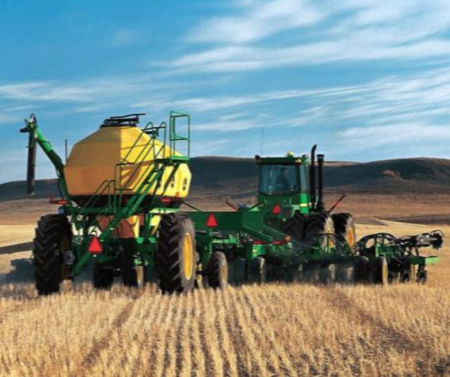Funding for ag producers and forest landowners to enhance conservation efforts
 In November, agricultural producers and private forest landowners can apply for funding to enhance conservation efforts in the greater Spokane River Watershed. Approximately 1.8 million dollars of funding is being made available through NRCS (which is part of the U.S. Department of Agriculture). Including financial incentives made available through the Washington State Conservation Commission, total funding will be over 2.3 million dollars. Up to 20 applications are expected to be approved in January.
In November, agricultural producers and private forest landowners can apply for funding to enhance conservation efforts in the greater Spokane River Watershed. Approximately 1.8 million dollars of funding is being made available through NRCS (which is part of the U.S. Department of Agriculture). Including financial incentives made available through the Washington State Conservation Commission, total funding will be over 2.3 million dollars. Up to 20 applications are expected to be approved in January.
Those interested in applying are encouraged to attend one of three workshops and/or contact Charlie Peterson with the Spokane Conservation District for more information. Click here for program flyer. Click here for workshop information.
This is the first of four rounds of funding being made available as part of the Greater Spokane River Watershed Regional Conservation Participation Program (RCPP). Last spring, NRCS awarded 7.7 million dollars of funding to enhance conservation efforts across nearly 4 million acres in the watershed, which stretches across Washington and Idaho. Although many of these projects will be in areas little seen by the public, they will result in reducing nonpoint source pollution that contributes to poor fish habitat, dissolved oxygen, algae blooms and other environmental issues effecting waterways that are very much in the public eye, e.g.—Lake Coeur d’Alene, the Spokane River and Lake Spokane.
Said Walt Edelen, the Water Resources Manager for the Spokane Conservation District, “NRCS made this funding available by combining resources from several programs. When you combine their funding with additional financial incentives and in-kind contributions, we can be really strategic about meeting the needs of both the environment and farmers.”
“There’s a balancing act,” said Peterson, “The funding is there to assist producers with making changes that enhance conservation and thus improve things like water quality and fish habitat. But for producers to be interested, it also needs to assist them with making their operations more sustainable and efficient. Successful applications will be a win-win.”
Partners developing the program have also included some very innovative incentives. One, called the commodity buffer program, will make annual payments to farmers for the value of the cropland lost by creating buffers along intermittent and perennial waterways. Another example is using funding to improve conservation practices to the level of being “Farm Smart Certified,” meaning the highest level of sustainable agriculture has been attained. Said Edelen, “None of this happens without successfully leveraging NRCS funding with state and local incentives and a willingness to do new things.”
In Washington, the two highest priority areas are agriculture in Hangman Creek and the Peone Prairie, and forest practices in the upper Little Spokane watershed. In Idaho, Hangman Creek, the Saint Maries River, lower St. Joe River and lower Coeur d’Alene Lake sub-watersheds are the highest priorities.
Project ranking is expected to be in January with implementation then beginning in the Spring.
